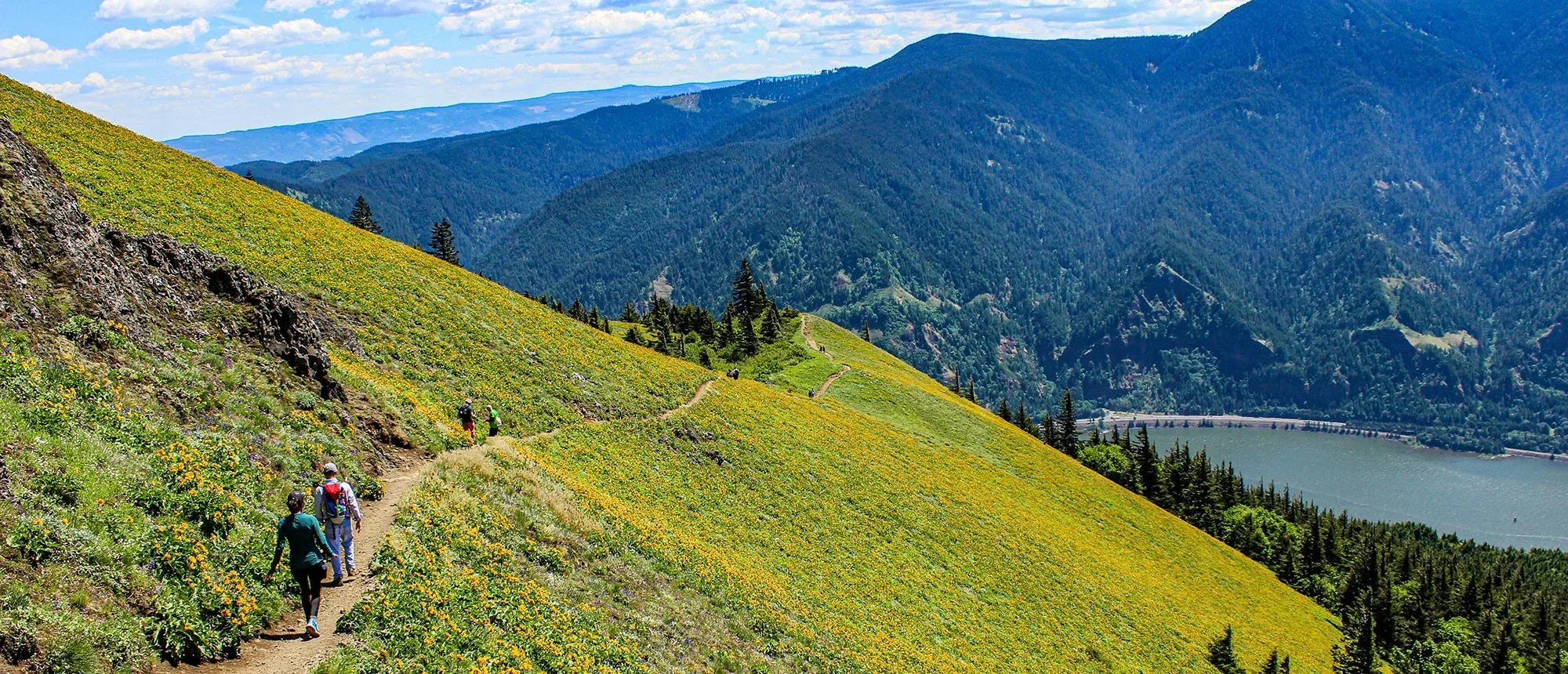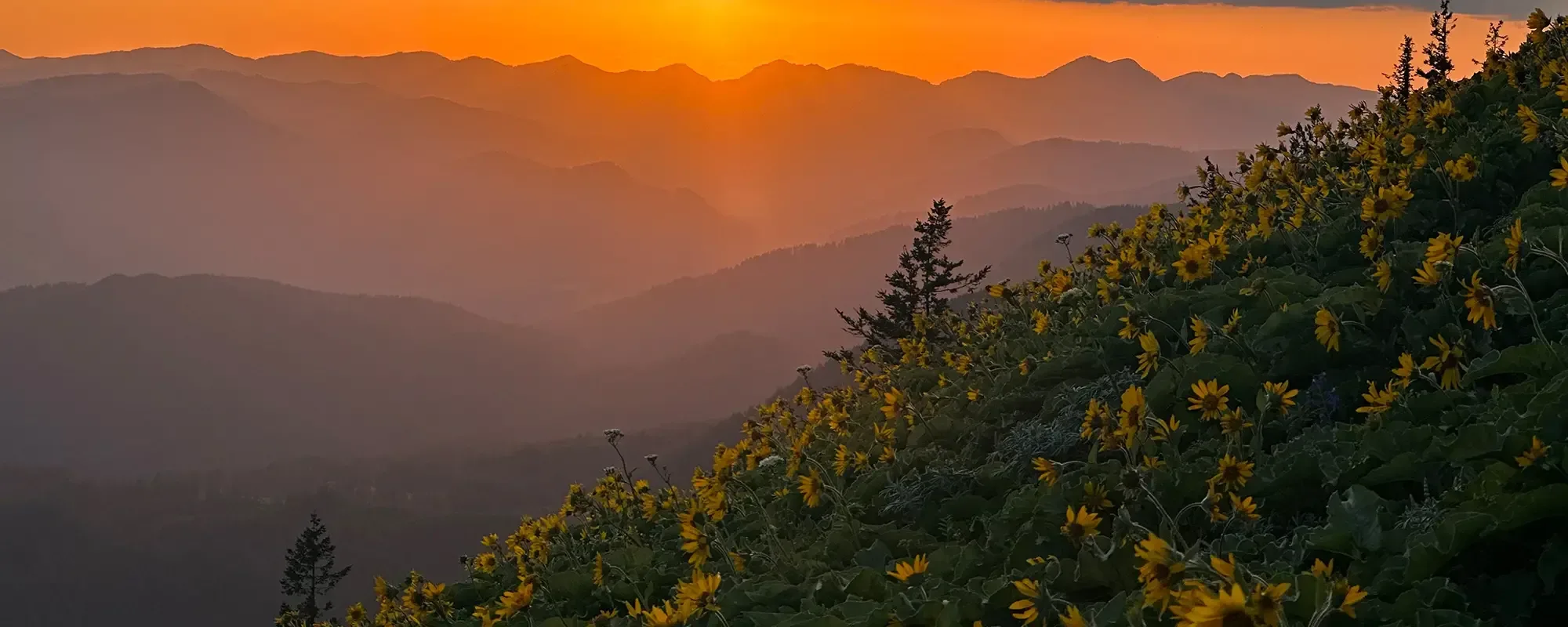Since 1980, Friends of the Columbia Gorge has worked to protect, preserve, and steward the Columbia Gorge for future generations ensuring the Gorge remains a vibrant, living place—wondrous, wild, and open to all—is at the core of what we do.
Since 1980, Friends of the Columbia Gorge has worked to protect and steward the Gorge, ensuring it remains a vibrant, wild place for future generations.
For over 40 years, we’ve fought irresponsible development, preserved scenic lands, and connected thousands of volunteers and students with the Gorge. Key accomplishments include:
- Blocking harmful developments like fossil fuel terminals and gravel pits
- Closing the Boardman coal plant and removing Condit Dam
- Strengthening laws on fossil fuel rail transport
- Winning legal victories for natural and tribal treaty rights
- Protecting 1,800+ acres via our land trust
- Organizing work parties to restore native habitats
- Helping create two nonprofits to manage recreation sites
Our efforts began in the 1970s-80s when Nancy Russell and allies responded to urban sprawl threats by founding Friends in 1980. Their work led to the 1986 Columbia River Gorge National Scenic Area Act, which protects 292,000 acres and recognizes tribal treaty rights.
In the 1990s, Friends helped shape the initial management plan and facilitated strategic land acquisitions like Catherine Creek and the Sandy River Delta.
During the 2000s, Friends opened its first field office, fought legal battles to defend protections, and launched a land trust that now stewards over 1,000 acres.
In the 2010s, we launched the Gorge Towns to Trails vision, joined coalitions to stop major fossil fuel terminals, expanded youth education, and responded rapidly to the 2017 Eagle Creek fire. We also acquired 500 acres through the Preserve the Wonder campaign.
The 2020s brought our 40th anniversary, a new logo, virtual outreach, and a successful campaign to update the Gorge Management Plan with stronger language on climate, equity, and inclusion. We’ve prioritized accessibility and increased engagement with youth, LGBTQ+, and communities of color.
Looking ahead, we aim to balance access with conservation, work closely with tribes, and honor the Native vision of thinking seven generations into the future. Today, with over 5,000 members, we remain the only group solely dedicated to protecting the Columbia Gorge.
For more than four decades, we’ve successfully advocated to protect the Gorge from irresponsible development, purchased scenic and sensitive lands for long-term preservation, and worked with community partners to foster stewardship by connecting thousands of students and volunteers to the Gorge’s wonders. Some of these successes we’ve played a role in include:
- Passage and enactment of the 1986 Columbia River Gorge National Scenic Area Act—our first major accomplishment and a landmark national conservation victory.
- Defeating numerous inappropriate large-scale development proposals, from destination resorts and new gravel pits to fossil fuel terminals and gas-fired power plants along the Columbia River.
- Ending inappropriate uses and development through the closure of the Boardman coal-fired power plant and the removal of the century-old Condit Dam.
- Strengthening state laws to protect the Gorge and its communities from irresponsible fossil fuel rail transport.
- Winning important legal victories to protect scenic and natural resources as well as the treaty rights of tribal partners.
- Protecting nearly 1,800 acres of land through the efforts of our land trust, including two trail systems, a turtle rehabilitation site, and climate change adaptation strategies.
- Stewarding sensitive lands and organizing hundreds of work parties to remove invasive species and replant native vegetation.
- Supporting the creation of two local nonprofit organizations (Klickitat Trail Conservancy and Cape Horn Conservancy) to steward two Gorge recreation sites.
1970s-1980s
Friends of the Columbia Gorge was born of an opportunity and a threat: as the National Park Service was considering the Columbia Gorge as a potential national scenic area, Interstate 205 bridge construction threatened to bring Portland and Vancouver’s sprawl into the area.
In the late 1970s, John Yeon, well-known architect and son of the chief contractor of the Historic Columbia River Highway, was alarmed as the I-205 bridge took shape and looked for a leader to take up the charge for federal protection of the Columbia Gorge before sprawl took hold in it.
Gorge hiking enthusiast and local amateur tennis champ Nancy Russell was a prime candidate and on a perfect summer evening in 1979, John invited Nancy and her husband Bruce to the Shire, his property across from Multnomah Falls, and convinced Nancy to take the lead to protect the Gorge.
In November 1980, Nancy and a newly gathered group of allies from both Oregon and Washington launched a small, scrappy group—Friends of the Columbia Gorge—with a visionary goal to permanently protect this utterly unique, culturally and ecologically significant area. Under her leadership, Friends opened an office, hired staff, and raised funds. Nancy also launched Friends’ hiking program, a tool that has helped to introduce thousands of people to the wonders of the Gorge.
Friends spent the next six years working to achieve permanent, federal protection for the Gorge. Thanks to Nancy’s persistence and help from governors, senators, and others from Oregon and Washington, the Scenic Area Act passed in 1986. This monumental advancement created the United States’ second national scenic area at 292,000 acres, which today remains the largest and most well-known of the country’s 10 National Scenic Areas.
The Scenic Area Act also recognized Native American tribes’ treaty rights and established their rights to weigh in on proposed development and impacts on natural, cultural, and scenic protection. Native nations have a long history as the first people in the Gorge, and they have advocated for Gorge protections for decades. Today, Friends works with tribes on a number of issues.
1990s
In the early years of the National Scenic Area, Friends worked to ensure that the Scenic Area lived up to its potential and that the new Gorge Commission and the U.S. Forest Service created a strong initial management plan to regulate development and protect scenic, natural, cultural, and recreational resources.
That plan laid the groundwork for protections we rely on today. Friends also worked with the Trust for Public Land, Gorge landowners, and the Forest Service to ensure the public acquisition of critical lands. Today, Gorge treasures such as the Sandy River Delta, Catherine Creek, and Columbia Hills State Park only exist because of strategic land purchases in the 1990s.
2000s
During the 2000s, threats to the Gorge grew: large-scale resort developments, trail and community impacts from increased tourism, and climate change, just to name a few. In 2000, Friends opened its first field office in Hood River, Oregon, and built greater local support for the Scenic Area Act as communities began seeking our help with protection.
Friends went to the courts when the Columbia River Gorge Commission and Forest Service sought to weaken Gorge protections, succeeding in providing stronger protections for natural resources and Special Management Areas.
In 2005, the creation of the Friends of the Columbia Gorge Land Trust expanded our role as protectors and advocates into land stewardship. The land trust currently holds and stewards over 1,300 acres of land.
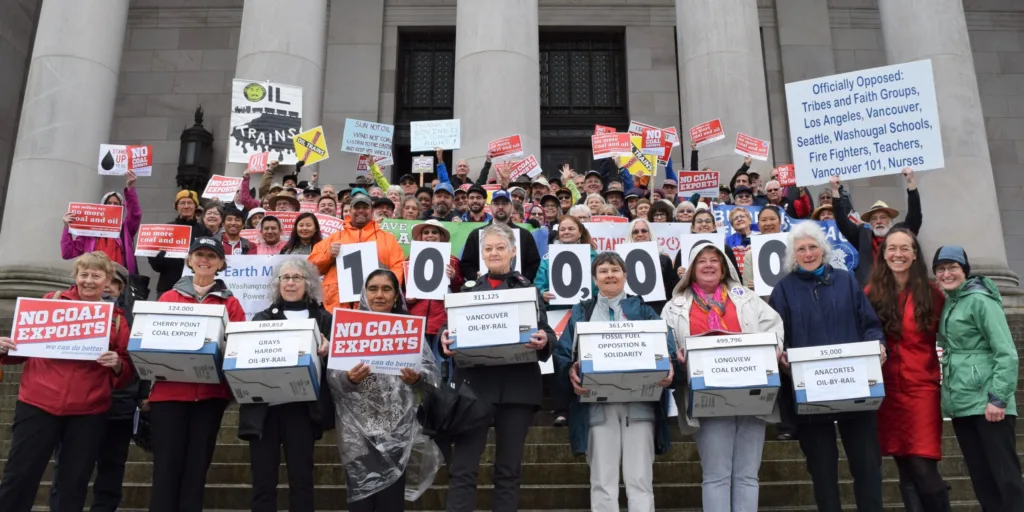
2010s
As we moved into our fourth decade, our role grew into community and land enhancer. We launched Gorge Towns to Trails to create an ambitious 200-mile loop trail network encircling the Gorge that would encourage local economic growth and promote car-free transportation systems to trailheads. Over the past decade, we’ve brought together more than 100 community partners to promote sustainable recreation and create public access preserves as part of our Gorge Towns to Trails network.
In 2012, we also joined growing regional efforts—partnering with community activists, other PNW conservation groups, and tribal leaders—to fight the threat to climate and Gorge community safety posed by oil and coal terminals and the irresponsible transport of fossil fuels through the Gorge. Collectively the Stand Up to Oil and Power Past Coal coalitions have stopped the development of five major oil terminal proposals in the Pacific Northwest, and strengthened key laws and regulations governing fossil fuel rail transport.
We launched new efforts to educate and engage the public, including programs designed to introduce children to the wonders of the Gorge. Since then our youth education programs have helped foster a stewardship culture for thousands of students on both sides of the Columbia River.
And we closed out the decade by successfully completing our Preserve the Wonder campaign to acquire eight beautiful Gorge landscapes totaling nearly 500 acres on the Gorge’s Washington side; helping launch the Ready, Set, Gorge and Trail Ambassador initiatives; and conducting a transformational rapid response to the 2017 Eagle Creek fire that not only dramatically increased our visibility and reach, but also helped strengthen our previous field work by adding a new volunteer stewardship capacity on public lands.
2020s
2020 brought our 40th anniversary and a chance to reflect on our challenges, progress, and future direction. We created a new logo that affirms unity and a more holistic voice for the entire Gorge—a perspective reflected in our field offices in Hood River and Washougal, Washington. We launched new virtual efforts to educate and engage the public using new digital technologies.
We rallied thousands of community activists across the region in a successful effort to revise the Gorge Management Plan—adding important new language on climate, urban growth, and diversity, equity, and inclusion. This was the first major update of the plan in three decades.
And we are bringing more diverse voices to the table. We’ve launched an ambitious new effort with to expand equity, inclusion, and access—including the development of our first bilingual signs for our land trust preserves; the launch of our land trust accessibility project to reimagine how Gorge lands are managed; and the expansion of our community engagement efforts to connect with local youth, the LBGTQ+ community, and communities of color.
Looking Ahead
As we approach our 50th anniversary, we’re focusing on protecting the land and supporting communities by ensuring that the Scenic Area Act works for everyone—especially as the Gorge faces existing and new dangers.
Today, the Gorge’s proximity to Portland brings threats from visitation and commerce, as well as a delicate balance between protecting the area from being loved to death and keeping it open and welcoming.
Native Americans have given us the perspective of thinking seven generations out, crucial to addressing long-term threats like climate change and development. We must manage it right, which also means working more closely with tribal partners to protect and steward the Gorge for generations to come.
More than 45 years after our founding, Friends of the Columbia Gorge is the only conservation organization entirely dedicated to protecting, preserving, and stewarding the Gorge for future generations. Our membership base now includes more than 6,000 members, including people who live in all six Gorge counties and beyond.
Get involved with our work—find out how to stay updated, volunteer, or give.
Latest News
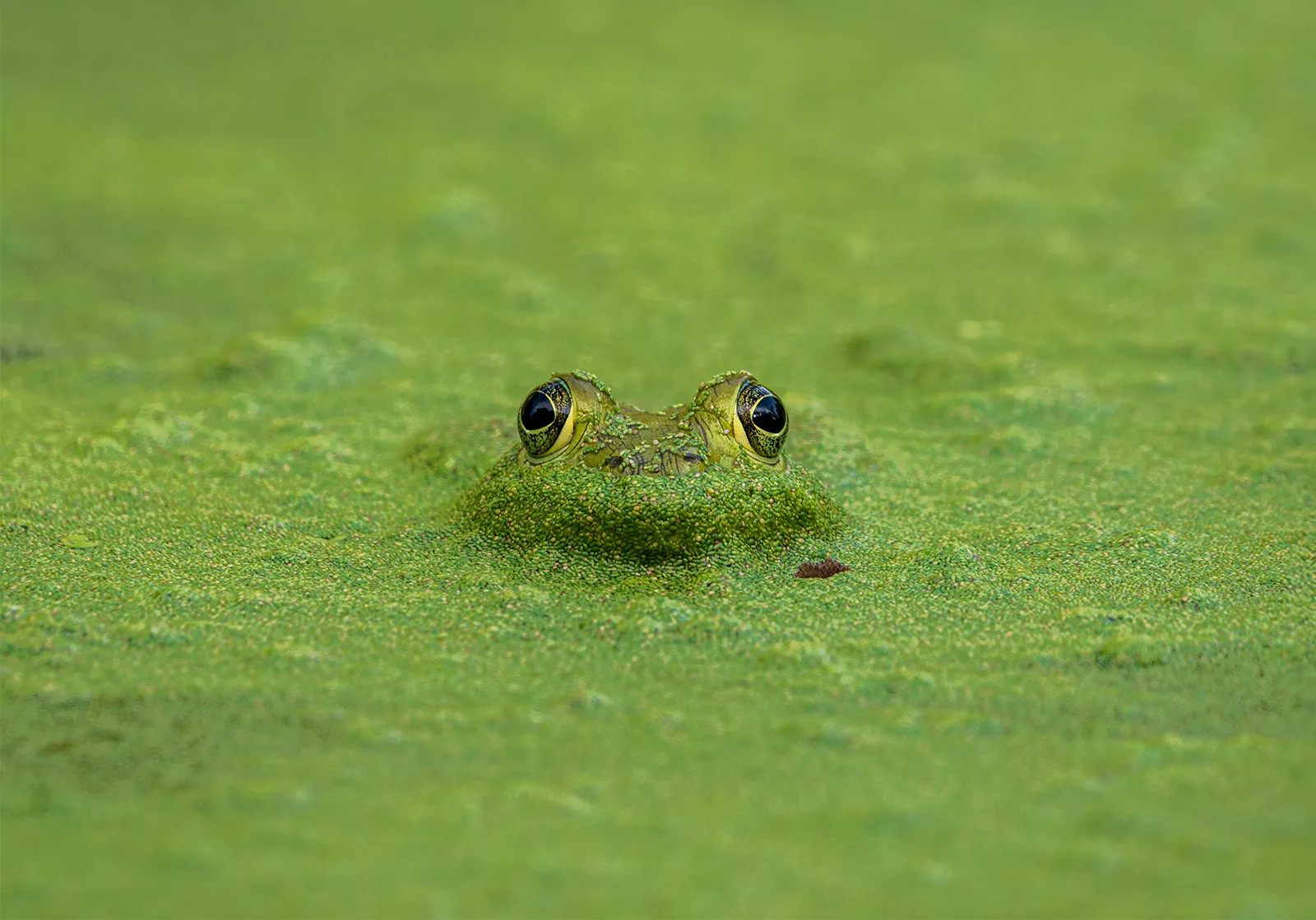
Invasive Predator: Inside the Race to Control the Deadliest Threat to Gorge Turtles
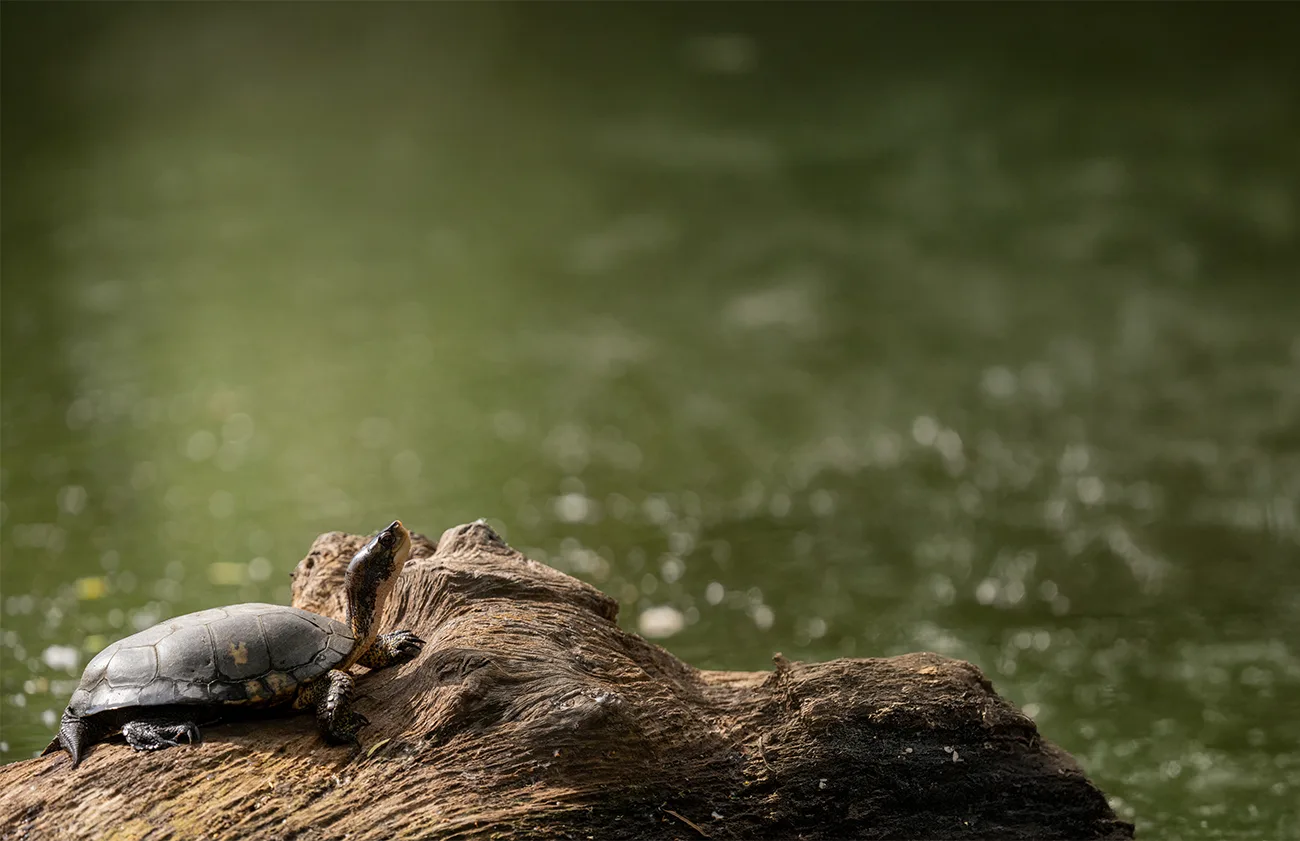
Native Prey: Inside a 30-Year Conservation Partnership to Save a Species
